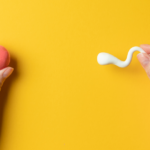Medically reviewed by
What is assisted reproductive technology?
Assisted reproductive technology (ART) is a collection of medical procedures that are used to help people have babies.
ART involves the collection of semen from a male, which is then used to fertilise an egg. For ART, eggs are collected from a female’s ovaries (using a needle inserted through the vagina, guided using ultrasound imaging) after one to two weeks of hormone injections. Sperm and eggs can be used fresh, soon after collection, or frozen for later use (after thawing and examination to make sure they’re healthy).
ART can use people’s own sperm and/or eggs, or donated sperm and/or eggs. In Australia, people’s own sperm and eggs are used in 97% of cases.
What’s the difference between having a baby naturally and having a baby using ART?
Natural conception
During intercourse, semen is released inside the vagina, near to the cervix (the opening of the uterus).
The semen is made up of sperm and a fluid that provides them with energy and protection. The fluid is jelly-like when it is ejaculated but it quickly becomes watery, allowing the sperm to ‘swim’ towards and into the cervix. Only a fraction of the sperm that are ejaculated into the vagina make it through the cervix and into the uterus (or further, into the fallopian tubes).
If there is an egg (there’s usually only one) in the fallopian tube, sperm will be chemically attracted to it. Sperm binds to a membrane around the egg (the zona pellucida) and releases enzymes to break down the zona pellucida. When a sperm gets through the zona pellucida it fuses with the cell wall of the egg (this is the moment of fertilisation). Fertilisation triggers the egg to stop allowing more sperm to get through.
A few hours after fertilisation, the genetic material from the sperm and the egg combine. At this point, the fertilised egg is called a zygote. This single cell divides into two cells, then four, then eight, then 16… until it forms a hollow ball of cells around day five after fertilisation (with a group of cells next to part of the inside wall of this ball). This is called a blastocyst.
Around five days after fertilisation, the blastocyst has moved from the fallopian tube and implants into the wall of the uterus. The cells that form the outside of the blastocyst begin to form the placenta, and the inner cells begin to form the embryo, which eventually develops into the baby.
ART conception
ART uses medical, surgical and laboratory techniques to get around the problems that cause infertility.
It uses a variety of techniques to select the best quality sperm, to improve the chances of fertilisation. In most cases, semen is collected by masturbation that's ejaculated into a container (you can read more about that process here). Sperm are washed to separate them from the seminal fluid and remove things like sperm that aren't moving, immune cells, proteins and infectious agents. If necessary, other procedures can be used for further processing and selection of sperm before they are used for fertilisation.
Types of assisted reproductive technology
Intrauterine insemination (IUI)
IUI is when semen is placed directly into the uterus through a narrow tube (catheter) inserter through the vagina and cervix. This allows more high-quality sperm to get into the uterus and fallopian tubes to allow natural conception.
With IUI, the embryo develops inside the uterus, just like it does when the pregnancy occurs naturally.
In vitro fertilisation (IVF)
IVF is when sperm are placed, with an egg, in a plastic dish in a laboratory. Placing the sperm in direct contact with an egg increases the likelihood of fertilisation, compared to IUI or natural conception.
After fertilisation, the first stages of development (up to the formation of the blastocyst) occur in the laboratory, rather than inside the uterus. This happens over three to five days. ART specialists refer to zygotes and blastocyst as embryos when talking to patients to make things simpler.
On day five or six after fertilisation, the embryo is transferred into the uterus through a catheter (embryos, like sperm and eggs, can be frozen for later use). Two to three weeks of hormone treatment is needed before embryo transfer, to get the uterus ready so the embryo can implant. Implantation occurs one to five days after embryo transfer.
Subscribe to our newsletter

Intracytoplasmic sperm injection (ICSI)
ICSI is when a single sperm is injected directly into an egg, under a microscope in a laboratory. The fertilised egg is then placed into a plastic dish in a laboratory for the first stages of development, the same as for IVF.
Sperm used for ICSI can be collected from a semen sample, like for other types of ART, or they can be collected directly from the testis, epididymis or vas deferens using a needle or a surgical procedure. Collection of sperm from the testis, epididymis or vas deferens may be necessary if there is a blockage that prevents sperm from moving through the reproductive tract. For men without sperm in their semen but who still produce a few sperm in their testis, more complicated testicular surgery under general anesthetic is performed.
Around two weeks after IUI, IVF or ICSI, a blood test can be used to confirm pregnancy.
Who might want to use ART?
ART is used by people who have no chance, or a low chance, of having a natural pregnancy . Most ART procedures are done for couples who are infertile but some are done for single people or same-sex couples.
A couple is usually considered to be infertile if they have not got pregnant after a year of regularly having sex without using contraception. Many couples seek help earlier than this, especially if there are reasons why they might have trouble getting pregnant naturally (e.g. vasectomy, past experience), or if there are concerns about the female partner’s age.
Which type of ART might I need?
IUI may be suitable for couples with unexplained infertility, mild endometriosis or mildly reduced sperm count or motility, for ejaculatory problems or if intercourse is not possible. IUI delivers sperm directly to the uterus, thereby moving the sperm closer to the fallopian tube openings so it is useful for infertility caused by things related to the cervix.
If infertility is related to problems with ovulation, IUI can be used in combination with hormone treatment to stimulate the ovaries.
IUI is not useful for treating infertility caused by a very low sperm count or poor sperm quality, or for females with fallopian tube blockage, severe endometriosis or advanced age.
IVF is useful for most causes of infertility, unless there is a severe problem with sperm numbers or quality.
You only need one good sperm for ICSI, so it is the method used when there are severe limitations to sperm, or for couples where IVF hasn’t worked multiple times.
What tests do I need for ART?
If you have concerns about your fertility, you should speak to your GP. You and the person you’re trying to make a baby with should get help at the same time, but you do not need to use the same doctor.
A GP can collect relevant information from you, perform a physical examination and order a semen test. There are usually no other tests needed at this stage.
If your semen test shows any results that could account for infertility, you should have another test around six weeks later, to confirm the result. If your semen test results are concerning, or your GP has other concerns about your fertility, they should refer you to a specialist in male infertility.
Investigation and management of infertility is not the same for everyone, so you should be guided by your specialist, but you might want to check in with your GP occasionally if you have questions.
How successful is ART?
The success of ART depends on lots of things, especially the underlying cause of infertility, but in lots of cases the cause of a couple’s infertility is unknown.
A female’s age has a big effect on the success of ART. Women aged between 30-34 years have a two-in-three chance of getting pregnant after three ART tries, whereas women aged 40-44 years have a one in five chance. A male’s age doesn’t have such a large effect, but it still matters.
Infertility clinics provide a variety of ‘add-ons’ that are offered to try and increase the success of ART but there is often no good evidence to support their use. You should ask for specific information about the cost and effectiveness of suggested add-on treatments.
Is the health of people born through ART different to the health of people born through natural conception?
ART is associated with higher-than-normal rates of pregnancy and newborn complications, but data about the long-term health of children and adults is reassuring. Males and females born after ART pregnancies do not have higher-than-normal rates of reproductive problems.













